Do you have a question about the Craftsman Contractor 113.29884 and is the answer not in the manual?
Essential steps and checks to perform before operating the saw.
Guidelines for safely setting up and relocating the table saw.
Instructions for proper electrical grounding of the saw for safety.
Pre-operation inspection checklist for the table saw.
Definition of the rotating shaft for cutting tools.
Definition of a cut made across the workpiece width.
Definition of a non-through cut creating a square notch.
Definition of a device for guiding workpieces.
Definition of uncontrolled grabbing and throwing of workpiece.
Definition of a device for feeding workpieces.
Definition of a device for feeding narrow workpieces.
Definition of cutting along the length of the workpiece.
Definition of throwing pieces similar to kickback.
Details on motor speed and type.
Instructions for safely connecting the saw to a power outlet.
Procedures for converting the motor for different voltage operations.
Step-by-step guide for attaching the handwheels.
Instructions for verifying and adjusting the table insert's flatness.
Procedure to ensure the blade is perpendicular to the table.
Instructions for assembling the saw's steel legs.
Steps to securely mount the saw onto its legs or a bench.
Guide for attaching the table extensions for increased surface area.
Instructions for mounting the power switch.
Steps for installing the right front guide bar for the rip fence.
Steps for installing the left front guide bar for the rip fence.
Instructions for installing the rear guide bars for the rip fence.
Procedures for aligning the rip fence guide bars correctly.
Steps to assemble the rip fence mechanism.
Adjusting the fence racks for proper spacing.
Adjusting the micro-adjust mechanism for precise fence movement.
Adjusting the self-aligning pad for fence parallelism.
Adjusting the lever that locks the rip fence in place.
Ensuring the rip fence is parallel to the blade and grooves.
Instructions for installing the measuring tapes on the rip fence.
Step-by-step guide for installing the blade guard assembly.
Correctly orienting the motor on its mounting base.
Detailed instructions for mounting the motor to the base.
Steps to install the belt guard for safety.
Connecting the motor wires for power.
Procedures for routing and securing the motor power cord.
Introduction to devices that assist in feeding workpieces.
Instructions for making and using push sticks and blocks.
Instructions for creating an auxiliary fence or work support.
Instructions for creating an auxiliary panel support.
Checklist for inspecting the saw before operation.
Emphasizes tool removal for safety.
Further guidance on preventing kickbacks and jams.
Guidelines for selecting and inspecting cutting tools.
Importance of a clean workspace.
Safety measures for personal protection during operation.
Steps for planning work, dressing safely, and inspecting workpieces.
Strategies to prevent kickbacks and throwbacks during cuts.
Critical reminders when the saw is in operation.
Procedures for safely shutting down and securing the saw.
Additional safety for cross cuts.
Detailed explanation of the crosscutting operation.
Techniques for making multiple identical cuts.
Guide to making angled cuts with the miter gauge.
Performing crosscuts with the blade tilted.
Performing cuts with both miter and bevel angles.
Detailed explanation of the ripping operation.
Techniques for bevel ripping narrow workpieces.
Using featherboards for thru-sawing operations.
Process of ripping wood through its thickness.
Procedures for cutting large panels.
Using featherboards for non-thru-sawing.
Performing rabbet cuts along edges or ends.
Grooving and shaping operations.
Instructions for performing dado cuts.
Instructions for performing molding cuts.
Adjusting the miter gauge for accuracy.
Aligning the blade parallel to miter gauge grooves.
Checking and adjusting blade tilt and squareness to the table.
Adjusting the tilt mechanism for smooth operation.
Lubrication points and schedule for the saw.
Common general troubleshooting issues and solutions.
Troubleshooting motor-related problems.
Contact information and procedures for obtaining service or parts.
Required information for ordering replacement parts.
Essential steps and checks to perform before operating the saw.
Guidelines for safely setting up and relocating the table saw.
Instructions for proper electrical grounding of the saw for safety.
Pre-operation inspection checklist for the table saw.
Definition of the rotating shaft for cutting tools.
Definition of a cut made across the workpiece width.
Definition of a non-through cut creating a square notch.
Definition of a device for guiding workpieces.
Definition of uncontrolled grabbing and throwing of workpiece.
Definition of a device for feeding workpieces.
Definition of a device for feeding narrow workpieces.
Definition of cutting along the length of the workpiece.
Definition of throwing pieces similar to kickback.
Details on motor speed and type.
Instructions for safely connecting the saw to a power outlet.
Procedures for converting the motor for different voltage operations.
Step-by-step guide for attaching the handwheels.
Instructions for verifying and adjusting the table insert's flatness.
Procedure to ensure the blade is perpendicular to the table.
Instructions for assembling the saw's steel legs.
Steps to securely mount the saw onto its legs or a bench.
Guide for attaching the table extensions for increased surface area.
Instructions for mounting the power switch.
Steps for installing the right front guide bar for the rip fence.
Steps for installing the left front guide bar for the rip fence.
Instructions for installing the rear guide bars for the rip fence.
Procedures for aligning the rip fence guide bars correctly.
Steps to assemble the rip fence mechanism.
Adjusting the fence racks for proper spacing.
Adjusting the micro-adjust mechanism for precise fence movement.
Adjusting the self-aligning pad for fence parallelism.
Adjusting the lever that locks the rip fence in place.
Ensuring the rip fence is parallel to the blade and grooves.
Instructions for installing the measuring tapes on the rip fence.
Step-by-step guide for installing the blade guard assembly.
Correctly orienting the motor on its mounting base.
Detailed instructions for mounting the motor to the base.
Steps to install the belt guard for safety.
Connecting the motor wires for power.
Procedures for routing and securing the motor power cord.
Introduction to devices that assist in feeding workpieces.
Instructions for making and using push sticks and blocks.
Instructions for creating an auxiliary fence or work support.
Instructions for creating an auxiliary panel support.
Checklist for inspecting the saw before operation.
Emphasizes tool removal for safety.
Further guidance on preventing kickbacks and jams.
Guidelines for selecting and inspecting cutting tools.
Importance of a clean workspace.
Safety measures for personal protection during operation.
Steps for planning work, dressing safely, and inspecting workpieces.
Strategies to prevent kickbacks and throwbacks during cuts.
Critical reminders when the saw is in operation.
Procedures for safely shutting down and securing the saw.
Additional safety for cross cuts.
Detailed explanation of the crosscutting operation.
Techniques for making multiple identical cuts.
Guide to making angled cuts with the miter gauge.
Performing crosscuts with the blade tilted.
Performing cuts with both miter and bevel angles.
Detailed explanation of the ripping operation.
Techniques for bevel ripping narrow workpieces.
Using featherboards for thru-sawing operations.
Process of ripping wood through its thickness.
Procedures for cutting large panels.
Using featherboards for non-thru-sawing.
Performing rabbet cuts along edges or ends.
Grooving and shaping operations.
Instructions for performing dado cuts.
Instructions for performing molding cuts.
Adjusting the miter gauge for accuracy.
Aligning the blade parallel to miter gauge grooves.
Checking and adjusting blade tilt and squareness to the table.
Adjusting the tilt mechanism for smooth operation.
Lubrication points and schedule for the saw.
Common general troubleshooting issues and solutions.
Troubleshooting motor-related problems.
Contact information and procedures for obtaining service or parts.
Required information for ordering replacement parts.
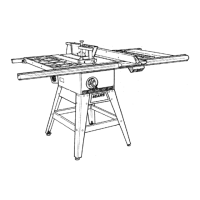
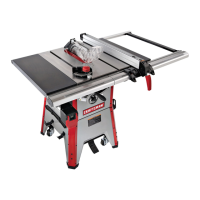
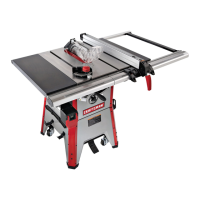
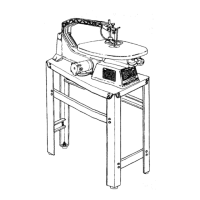
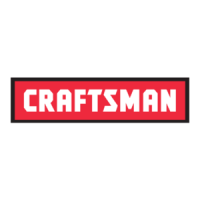
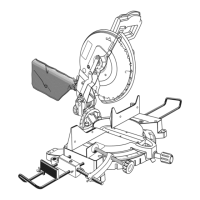
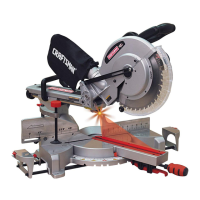
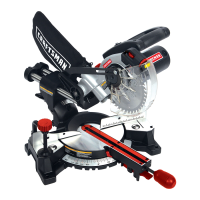
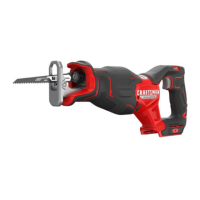
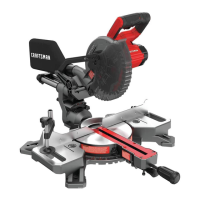
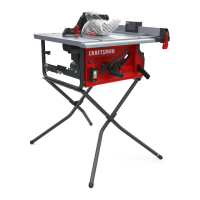
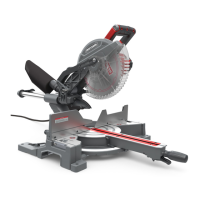
